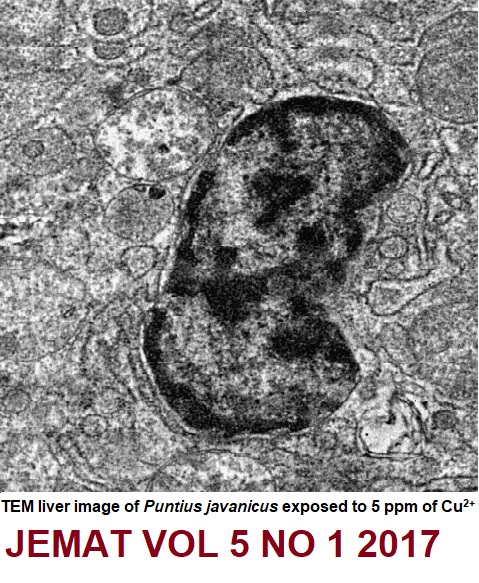Isolation and characterization of molybdenum-reducing and PEG-degrading Enterobacter cloacae strain KIK-14 in agricultural soil from Nigeria
DOI:
https://doi.org/10.54987/jemat.v5i1.414Keywords:
Molybdenum, polyethylene glycol, Enterobacter cloacae, bioremediation, molybdenum blueAbstract
Today, numerous researches have demonstrated the cost-effectiveness of bioremediation to waste removal from agricultural and industrial sectors particularly at lower levels of the toxicants, where other physicochemical techniques are ineffective. Multiple toxicant remediation by a single microorganism is important for remediation of sites contaminated with numerous toxicants. In this work, a molybdenum-reducing bacterium was screened for its ability to use the xenobiotic polyethylene glycol (PEG) as the sole source of carbon for growth and as electron donor source for molybdate reduction. Biochemical analysis results in the tentative identification of the isolate as Enterobacter cloacae strain KIK-14. The use of PEGs as an electron donor in this bacterium did not support molybdenum-blue production, even though the bacterium grew well on PEGs 200, 300, 600 and 1000 independent of molybdate reduction. Reduction of molybdate to Mo-blue was optimal at pH between 6.0 and 6.3, the temperature between 25 and 37 oC, molybdate and phosphate concentrations between 15 and 20 mM and between 5.0 and 7.5 mM respectively. The best electron donor source supporting the reduction process was glucose. The Mo-blue absorption spectrum resembles reduced phosphomolybdate and is similar to that of the previous Mo-reducing bacterium. At 2 ppm of silver, mercury and copper, molybdenum reduction was inhibited by 41.5, 57.1 and 40.5%, respectively. The ability of this bacterium to detoxify mixed toxicants makes it an important tool for bioremediation.
Downloads
Published
How to Cite
Issue
Section
License
Authors who publish with this journal agree to the following terms:
- Authors retain copyright and grant the journal right of first publication with the work simultaneously licensed under a Creative Commons Attribution License (http://creativecommons.org/licenses/by/4.0) that allows others to share the work with an acknowledgement of the work's authorship and initial publication in this journal.
- Authors are able to enter into separate, additional contractual arrangements for the non-exclusive distribution of the journal's published version of the work (e.g., post it to an institutional repository or publish it in a book), with an acknowledgement of its initial publication in this journal.
- Authors are permitted and encouraged to post their work online (e.g., in institutional repositories or on their website) prior to and during the submission process, as it can lead to productive exchanges, as well as earlier and greater citation of published work (See The Effect of Open Access).


